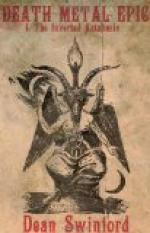Moore, although preeminently a lyric poet, has left us the eastern epic “Lalla Rookh,” and Lockhart some “Spanish Ballads” which paraphrase the Cid.
Among Macaulay’s writings the “Lays of Ancient Rome” have epic qualities, which are also found in Leigh Hunt’s “Story of Rimini.”
The plot of Tristram has been utilized both by Matthew Arnold and by Swinburne, while William and Lewis Morris have rewritten some of the old classic stories in “The Earthly Paradise,” the “Life and Death of Jason,” the “Defense of Guinevere,” and the “Epic of Hades.”
It was, however, the Victorian poet-laureate Tennyson who gave the Arthurian Legend its latest and most artistic touches in “Idylls of the King.” Some critics also claim as an example of the domestic epic his “Enoch Arden.”
Among recent writers, sundry novelists have been hailed as authors of prose epics. Thomas Westwood has composed in excellent verse the “Quest of the Sangreall,” Mrs. Trask “Under King Constantine,” a notable addition to the Arthurian cycle, and Stephen Philips has sung of Ulysses and of King Alfred.
FOOTNOTES:
[Footnote 20: See the author’s “Legends of the Virgin and Christ.”]
BEOWULF[21]
Introduction. The only Anglo-Saxon epic which has been preserved entire was probably composed in Sweden before the eighth century, and taken thence to England, where this pagan poem was worked over and Christianized by some Northumbrian bard. Although some authorities declare it dates back as far as the fifth century, most affirm it must have been composed in the seventh. The present manuscript, now preserved in the British Museum, dates back to the tenth century. It contains some 3182 lines, and is written in alliterative verse (that is to say, that all the lines are written in pairs and that each perfect pair contains two similar sounds in the first line and one in the second). Although the author of Beowulf is unknown, the poem affords priceless hints in regard to the armor, ships, and mode of life of our early Saxon fore-fathers. Many translations of the poem have been made, some in prose and others in verse, and the epic as it stands, consisting of an introduction and forty-two “Fits,” is the main text for the study of the Anglo-Saxon language.
The Epic. Hrothgar, King of Denmark, traces his origin to Skiold, son of Odin, who as an infant drifted to Denmark’s shores. This child lay on a sheaf of ripe wheat, surrounded by priceless weapons, jewels, and a wonderful suit of armor, which proved he must be the scion of some princely race. The childless King and Queen of Denmark therefore gladly adopted him, and in due time he succeeded them and ruled over the whole country. When he died, his subjects, placing his body in the vessel in which he had come, set him adrift.
Men are not able
Soothly to tell us, they in halls who reside,
Heroes under heaven, to what haven he hied.[22]




